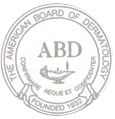Sarcoidosis is an inflammatory condition where the immune system goes into overdrive, creating clusters of inflamed tissue called granulomas to form in different parts of the body. Though it can affect many organ systems such as the skin, eyes, heart, and nervous system, involvement of the lungs and
Read more-
Sarcoidosis
-
Scabies
Scabies is an intensely itchy rash caused by an infestation with a burrowing mite called Sarcoptes scabiei. Infected individuals develop pink papules, excoriations, nodules, and burrows (thread like tracks in the skin). These findings mainly affect the hands, wrists, axillae (armpits), feet, waistline,
Read more -
Scleroderma (Systemic Sclerosis)
Scleroderma is a rare autoimmune condition that causes the hardening and tightening of the skin and connective tissue underneath it. The condition can also impact underlying blood vessels and organs. Affected individuals may exhibit Raynaud’s phenomenon - a condition where the fingers and toes may
Read more -
Sebaceous Hyperplasia
Sebaceous hyperplasia are benign, non-worrisome, enlarged oil gland growths. They present as pinkish orange or yellow papules, sometimes with a central dell, most commonly found on the central face of middle aged or older people. Sebaceous hyperplasia can also be found on the chest, areola, mouth, or
Read more -
Seborrheic Dermatitis
Seborrheic dermatitis is a very common skin condition which presents with itchy, red patches of skin, greasy scales, and flaking. Common areas of involvement include the scalp, ears, eyebrow region, and sides of the nose. It typically occurs in infants younger than 3 months of age and in adults ages
Read more -
Seborrheic Keratoses
Seborrheic keratoses are very common skin growths that tend to develop with age. They are benign and not worrisome. These growths are commonly found on the head, neck, chest, or back, though they can appear anywhere on the body with the exception of the palms and soles. Seborrheic keratoses can be white,
Read more -
Shingles (Herpes Zoster)
Shingles is a rash caused by the reactivation of the chickenpox virus (also known as the varicella zoster virus or VZV). Classically, the rash affects only one side of the body, within a single stripe or band known as a dermatome. There may be a prodrome consisting of pain, itching, or tingling localized
Read more -
Skin Care for Dry, Sensitive Skin Types
Dry skin is a common skin condition that results when the skin loses moisture and its natural oils resulting in scaling, flaking, cracking, and itching. It is sometimes also referred to as xeroderma or xerosis. Dry skin affects people of any age and skin type and can occur anywhere on the body. Dry skin
Read more -
Skin Tags
Skin tags are very common, benign, skin growths. They present as fleshy outgrowths of the skin, at times extending from a stalk or stem. They are frequently found in areas of high friction such as around the neck, in the axilla (armpits), or in the groin folds. They are usually flesh colored, but can
Read more -
Squamous Cell Carcinoma
Squamous cell carcinoma is the second most commonly occurring type of skin cancer. It appears most frequently in areas that are exposed to direct sunlight, such as the face, nose, ears, lips, neck, and back of the hands. Squamous cell carcinomas can present as rough, scaly, red patches; wart or horn-like
Read more -
Stasis Dermatitis
Stasis dermatitis is a type of eczema that develops on the lower legs as a result of poor circulation. In affected people, the valves in the deep leg veins that help push blood back to the heart begin to fail, leading to the leakage of fluid, varicose veins, and subsequent swelling of the lower legs.
Read more -
Stretch Marks (Striae)
Stretch marks are a type of scar that occurs when the skin stretches rapidly. Examples include: growth spurts during puberty, pregnancy, rapid weight loss or gain, and bodybuilding. It can appear as pinkish, purplish, or flesh colored linear bands or streaks on the skin that are depressed or indented.
Read more -
Sun Safety
Protection from UV radiation is important all year round, even on cloudy or cold days. UV radiation can even reflect off water, sand, and snow. Below are some tips on sun safety: Use sunscreen. Pick a broad spectrum sunscreen (one which blocks both UVA and UVB rays) with an SPF 30 or higher. Apply liberally,
Read more -
Sunscreen
Sunscreen use is critical to protecting your skin from UV radiation. Wearing the right sunscreen will allow you to maximize your time in the sun while being protected from its harmful rays. Dermatologists recommend picking a broad spectrum sunscreen (one which blocks both UVA and UVB rays) with an SPF
Read more -
Tattoo Removal
A tattoo is a permanent mark made by depositing ink or pigment into the skin. Various options are available for tattoo removal including: laser treatments, dermabrasion, chemical peels, and even surgical excision. Laser treatments are the preferred method for most tattoo removal. Laser therapy works
Read more -
Telogen Effluvium
Telogen effluvium is a common cause of temporary hair loss caused by excessive shedding of telogen or resting hairs. All hair cycles through the stages of hair growth - from growing to involution to resting and eventually shedding. In a normal scalp, about 90-95% of hair follicles are in the growing
Read more -
The Damaging Effects of UV Radiation
The sun emits UV radiation in the form of UVA, UVB, and UVC. UVA rays, which are the longest, penetrate the deepest in the skin and are responsible for tanning and premature aging. UVB rays are shorter and responsible for vitamin D production in the skin. UVB rays are also the cause of sunburning. UVC
Read more -
Tinea
Tinea refers to a group of fungal infections which can affect the skin, hair, and nails. The specific name of the infection depends on the affected area of the body. A few common examples include: tinea capitis (infection of the scalp/head) - often referred to as ringworm tinea corporis (infection
Read more -
Tinea Versicolor
Tinea versicolor, also called pityriasis versicolor, is a common skin infection caused by the overgrowth of a yeast. Typically, it presents as patchy areas of lighter or darker discoloration on the trunk and shoulders that can be scaly in appearance. It can affect anyone, but is more common in teens
Read more -
Traction Alopecia
Traction alopecia is a type of hair loss that occurs as a result of the hair being pulled too tightly. It commonly occurs in hair styles such as ponytails, buns, tight braids, cornrows, hair weaves, and hair extensions. The prolonged traction or pulling leads to hair breakage and resultant hair loss
Read more -
Urticaria (Hives)
Urticaria is the medical term for hives - a common skin rash which presents with itchy pink welts. The welts can vary in size, shape, and distribution. A defining characteristic is that the individual lesions are transient, appearing and resolving within a 24 hour period. So, even though an individual
Read more -
Venous Lakes
Venous lakes are bluish, purplish, vascular papules that occur on sun exposed areas such as the ears and lips. They are a result of long-term sun exposure and sun damage. As they are harmless, no treatment is necessary. However, they can be treated or removed if bothersome or symptomatic. Disclaimer:
Read more -
Vitiligo
Vitiligo is an autoimmune disease which causes the loss or inactivation of pigment producing cells in the skin, resulting in light or white patches of skin and hair. The degree and severity of pigment loss can vary from person to person. In some, it is localized to a small area or streak. In others,
Read more -
Warts
Warts are non-cancerous, benign growths on the skin that are caused by infection from viruses known as human papillomavirus (HPV). The most common type of warts include: common warts, plantar warts (warts that appear on the soles of the feet), flat warts, and genital warts. Warts can present as rough,
Read more
The Dermatology Center at Ladera
600 Corporate Drive Suite 240
Ladera Ranch, CA 92694
Tel: (949) 364-8411
Fax: (949) 364-8511
| Monday: | 8:00 AM - 5:00 PM |
| Tuesday: | 8:00 AM - 5:00 PM |
| Wednesday: | 8:00 AM - 5:00 PM |
| Thursday: | 8:00 AM - 5:00 PM |
| Friday: | 8:00 AM - 4:00 PM |
| Saturday: | Closed |
| Sunday: | Closed |


